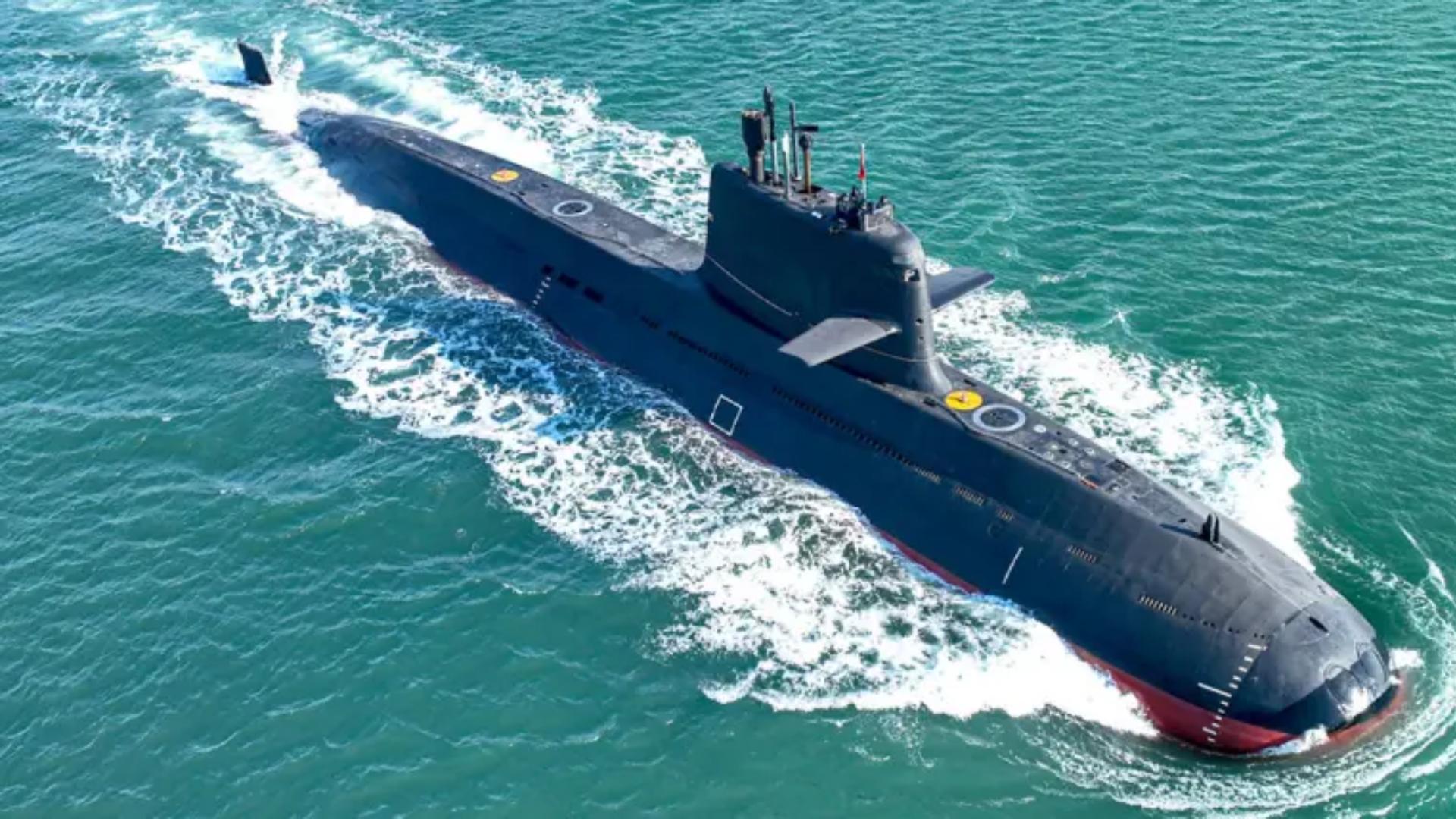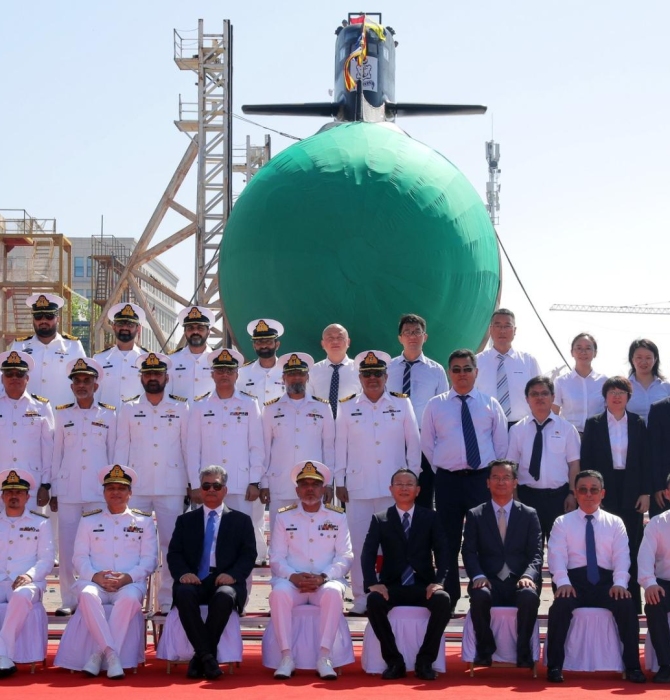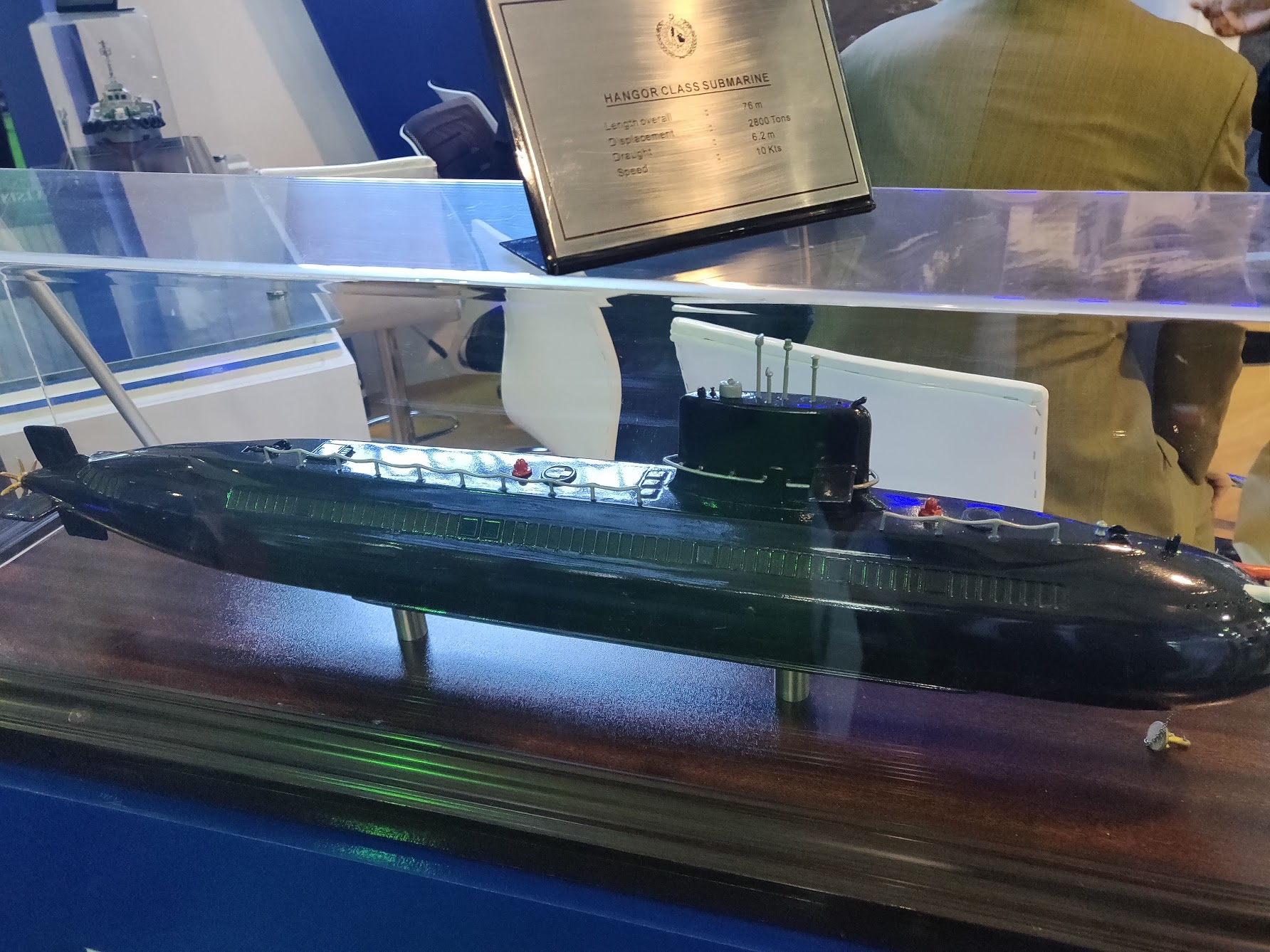14771Views

Extending Deterrence: How the Hangor-Class Reshapes Pakistan’s Maritime A2/AD Posture Quwa Premium
The third Pakistan Navy (PN) Hangor-class air-independent propulsion (AIP)-equipped submarine was recently launched. Seeing that the lead boat, PNS Hangor, has been in sea trials since April 2024, it appears that the PN will begin inducting its new-generation submarine by either the end of 2025 or towards the start of 2026.
Undoubtedly, inducting all eight boats will significantly enlarge the PN submarine force, especially its AIP-equipped fleet by nearly 4X from 3 to 11 boats, not including induction of AIP-equipped SWATS/mini-submarines, which would increase it further.
However, as half of the Hangor order is being built in KSEW, that complete shift is still years away – potentially extending into the early 2030s. That said, one can expect the relatively rapid induction of the first four boats from China within the next two years. It would double the PN’s AIP-equipped submarine (SSP) fleet fairly rapidly.
Why Submarines Matter
While this analysis will contend that the PN is aiming to extend its area of operations to the edge of the Arabian Sea and Indian Ocean with the Hangor, it must be noted that submarines are, at their core, the ideal platform for defensive postures. In theory, one might argue that a ‘strong’ anti-submarine warfare (ASW) capability would offset the sub-surface threat, but the reality of both ocean dynamics and naval warfare make ASW – at least in the sense of imposing an ASW presence in an another nation’s waters and maritime interests – still exceptionally difficult to implement.
First, ocean dynamics generally conceal a submarine’s presence relatively well. This is a result of a few factors, such as, among others, that open and shallow waters alike are ‘noisy.’ Since saltwater is mostly opaque to electromagnetic radiation (rendering radar use ineffective), the task of detecting submarines is left on acoustic sensors. However, these acoustic sensors must sift through a large number of other noise sources underwater, such as marine life, shipping traffic, and even temperature or salinity variations in the sea that can create pockets for a subsurface threat to evade acoustic detection.
Second, the ocean is vast, and that alone makes finding a submarine a “needle in a haystack” problem. To even start an effective ASW operation, one must know where to start looking. Even after defining the area, the ASW operation requires a relatively vast array of assets, from maritime patrol aircraft (MPA) to special ASW helicopters to ASW-equipped surface vessels and so on. Granted, ASW could be relatively easier to implement in a defensive sense where one’s territorial waters could leverage underwater acoustic sensor networks (e.g., SOSUS), continuous MPA-driven monitoring, and other routine surveillance measures. But when it comes to imposing that ASW presence in distant and/or hostile waters, the task is more difficult. A navy must contend with the ocean’s inherent dynamics and enemy fire.
Third, conventional submarines leverage several advantageous attributes, such as the ability to operate underwater without surfacing for oxygen (snorkelling) for several weeks if equipped with AIP. Thus further compounds the difficulty of ASW operations as it fully eliminates the chance of finding the submarine from the air or surface as it does not need to approach the surface for oxygen. Although the PN’s forthcoming Hangor-class submarines will use Stirling-based AIP systems, which likely utilize moving parts (which can create an acoustic signature), other AIP systems, like those based on fuel-cells, eliminate moving parts to a significant degree, thereby concealing the submarine’s acoustic signature further. Other measures, like using double-hull construction (as is the case with the Hangor-class), non-magnetic steel, and, generally, emphasis on reducing the number of moving components conceal acoustics further.
When these factors are considered together, the presence of even one enemy submarine in open waters can elevate the risk of operating in that particular area. However, in the case of the PN and its forthcoming Hangor fleet, that threat potential could be multiplied by several folds.
The Pakistan Navy's Evolving A2/AD Strategy
The IAF’s goal is to continue consolidating its platforms and re-leverage its existing training, logistics, maintenance, and other support overhead rather than to pivot towards net-new platforms. In fact, at a broader level, even the Indian Navy (IN) likely factored support commonality when it opted for 26 new Rafale-M fighters for its aircraft carriers rather than the competing Super Hornet. Yes, other technical factors played a role (e.g., compatibility with the IN’s aircraft carrier system), but commonality plays a major role.
End of excerpt. You’ll need to login or subscribe to Quwa Premium to access the full article.
Existing Quwa Plus/Pro members can log in below
Note: Logged in members may need to refresh the article page to see the article.


